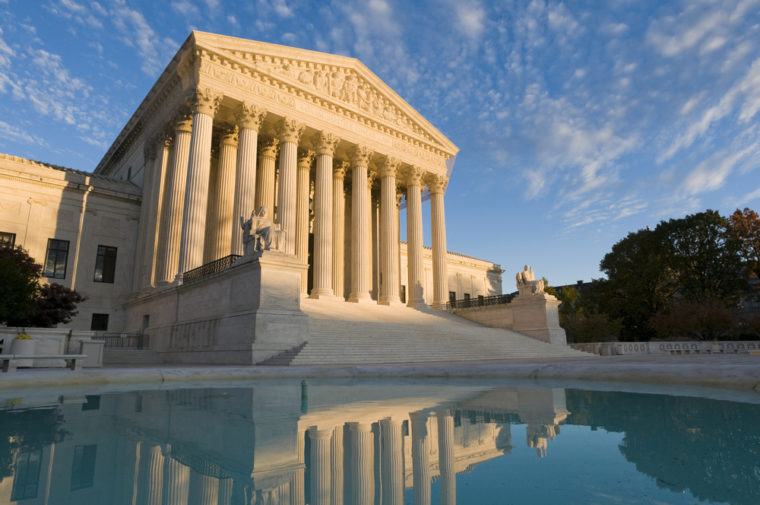How might the makeup of the United States Supreme Court change depending on who is elected as the country’s next president?
A new analysis from Washington University in St. Louis estimates where the candidates’ potential nominees fit compared with the current justices, and finds that a Democratic appointee would move the middle of the court to the left, shifting the court’s balance of power.

The study, “Possible Presidents and Their Possible Justices,” co-authored by Lee Epstein, the Ethan A. H. Shepley Distinguished University Professor, uses the scaling strategy proposed in the Judicial Common Space.
“We base Hillary Clinton’s ideology on her voting patterns as a U.S. Senator,” Epstein said. “Because Donald Trump has never held federal office, we use Mike Pence’s (Trump’s vice presidential nominee) congressional voting patterns as a proxy for Trump’s ideology.”
From various sources, Epstein and co-authors Andrew Martin of the University of Michigan, and Kevin Quinn of the University of California-Berkeley, identified possible Clinton and Trump nominees to the Supreme Court, and included President Barack Obama’s nominee, Merrick Garland.
A new Democratic nominee — Garland or someone else appointed by Clinton if she were to win the presidency — would most likely vote in a similar fashion to the two more moderate members of the court’s four-member liberal wing, Justices Stephen Breyer and Elena Kagan, the study finds.
Such a situation would move Justice Anthony Kennedy from his standing at the court’s ideological center, Epstein said.
Contrary to many claims to the contrary, the analysis finds Garland as the most liberal of the current crop of potential nominees. “He is nearly as close to Justices Ginsburg and Sotomayor as he is to Justices Kagan and Breyer,” Epstein said.
On the Republican side, one potential Trump nominee Thomas Hardiman falls into the moderate category.
“Were he to replace Justice Antonin Scalia (who died in February), there is some possibility that he would relieve Justice Kennedy of Kennedy’s ‘super median’ status,” Epstein said. “Hardiman or Kennedy could form majority coalitions with the left or right side of the court — in much the same way that Kennedy and Justice Sandra Day O’Connor did in the 1990s and 2000s.”
